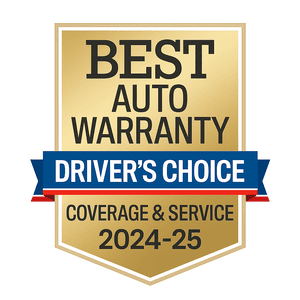Do you want to Change Auto Insurance? According to a 2024 J.D. Power study, drivers who regularly shop for auto insurance save an average of $560 annually compared to those who stay with the same provider. However, changing insurance incorrectly can lead to costly coverage lapses, cancellation fees, and even legal penalties in some states. This comprehensive 2,000-word guide will walk you through every step of the insurance switching process, revealing professional tips to maximize savings while maintaining continuous protection for your vehicle.
Understanding the Auto Insurance Switching Process and How to Change Auto Insurance
Changing insurance providers involves more than just finding a better rate. The process requires careful planning to avoid these common pitfalls:
Top 5 Mistakes When Changing Auto Insurance
| Mistake | Consequence | Solution |
|---|---|---|
| Coverage gaps | Driving uninsured is illegal in most states | Overlap policies by 1 day |
| Inadequate coverage | Out-of-pocket costs after accidents | Match current limits exactly when comparing |
| Ignoring cancellation fees | Unexpected charges from old insurer | Review policy terms before switching |
| Not updating lienholder | Violation of loan/lease terms | Notify lender within their timeframe |
| Forgetting discounts | Missing potential savings | Create list of current discounts |
When to Consider Changing Auto Insurance
Smart drivers review their insurance annually, but these specific situations often warrant an immediate comparison:
Financial Triggers
- Rate increases over 10% at renewal without claims
- Improved credit score (most insurers use credit-based pricing)
- New discounts available (alumni groups, professional associations)
Life Changes
- Moving to a new ZIP code (especially lower-risk areas)
- Marriage or divorce (marital status affects rates)
- Adding/removing drivers (teen drivers or college students)
Vehicle Changes
- Purchasing a new car (dealers often overcharge for insurance)
- Buying an electric vehicle (specialized coverage options)
- Vehicle modifications (aftermarket parts may need special coverage)
The Step-by-Step Switching Process
Step 1: Audit Your Current Policy (1-2 Hours)
Before shopping, gather these documents:
- Declarations page: Shows coverage types and limits
- Recent billing statements: Reveals your current premium
- Claims history: Last 3-5 years of incidents
- Discount list: All current savings you receive
Step 2: Get Multiple Quotes (3-4 Hours)
Compare at least these five types of insurers:
| Insurer Type | Example Companies | Best For |
|---|---|---|
| Direct insurers | Geico, Progressive | Tech-savvy shoppers |
| Captive agents | State Farm, Allstate | Personalized service |
| Independent agents | Local brokers | Hard-to-insure drivers |
| Online marketplaces | The Zebra, Compare.com | Quick comparisons |
| Specialty insurers | Hagerty, Grundy | Classic/vintage cars |
Step 3: Verify Insurer Reliability (1 Hour)
Check these crucial ratings:
- AM Best: Financial strength (A+ or better recommended)
- J.D. Power: Claims satisfaction scores
- NAIC Complaint Index: Shows complaint volume vs. competitors
- BBB Rating: Local office reputation
Step 4: Time Your Switch Perfectly
The insurance switching timeline:
- 30 days before renewal: Start shopping
- 10 days before renewal: Select new insurer
- 1 day before renewal: New policy starts
- Renewal date: Cancel old policy
Special Considerations
Changing Insurance with a Lienholder
Additional requirements for financed/leased vehicles:
- Lienholder must be listed on new policy
- May need to provide proof within 10 days
- Gap coverage may need to be transferred
- Some lenders charge admin fees for changes
Switching After an Accident
Wait until:
- All claims are fully settled
- Repairs are completed
- At least 3 years have passed (accidents affect rates that long)
How Extended Warranties Complement Insurance
While insurance covers accidents, mechanical breakdowns require separate protection. Here’s why savvy drivers bundle both:
| Coverage Need | Auto Insurance | Extended Warranty |
|---|---|---|
| Engine Failure | ❌ Not covered | ✅ Covered |
| Transmission Repair | ❌ Not covered | ✅ Covered |
| Electrical Issues | ❌ Not covered | ✅ Covered |
| Car Accident | ✅ Covered | ❌ Not covered |
Frequently Asked Questions
How often should I shop for better rates?
Annually: Insurers frequently increase rates for loyal customers. Set a calendar reminder to compare rates every 12 months.
Will changing insurers affect my credit score?
No: Insurance quotes typically use soft inquiries that don’t impact credit. Multiple inquiries within 14 days count as one for scoring purposes.
Can I cancel my policy mid-term?
Yes, but you may owe “short rate” fees (typically 10% of remaining premium). Always check your cancellation terms before switching.
Final Checklist for Changing Insurance
- Compare 5+ insurers with identical coverage
- Check financial ratings (AM Best A+ or better)
- Time switch within 30 days of renewal
- Confirm new policy before canceling old
- Notify lienholder if financing/leasing
- Consider adding extended warranty protection
Pro Tip: Pair your new auto insurance with an Auto Guard Protect warranty for complete coverage against both accidents and mechanical failures. Get a free quote today and drive with confidence knowing you’re fully protected.


